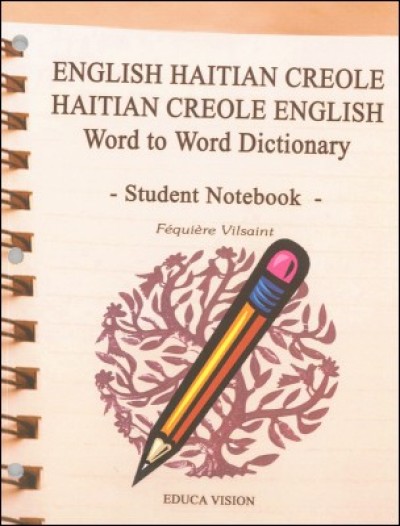

Started immediately after the 1894 revolution, the influx of Spanish-speaking

Unstable and the United States occupied the territory with only one nine months’īreak from 1912 until 1933, a period remembered with mixed feelings by localĬreoles (cf. Further revolutions in 1909 and in 1926 kept the region politically

AsĪ result of an 1894 revolution Nicaragua annexed the region ( Holm 1983b: 98 ġ986: 16). The United States put the Miskito Coast under Nicaraguan protection in 1860. Varieties in question have become obscured. Due toįrequent back and forth migrations, exact genetic relationships between the creole were recruited to work on the Miskito Coast. Significant numbers of Jamaicans, Cayman Islanders, San Andresans and Blacksįrom the Southern U.S. During the late 19th and early 20th century, Nicaraguan Corn Islands by 1810 and Pearl Lagoon, north of Bluefields, during Old Providence and San Andres served as springboards in the colonization of the Since then, Nicaraguan Creole English has undergone influence from several other Western Caribbean creoles: Off-shoot of Nicaraguan Creole English ( Holm 1986: 13). Due to the forced exodus of 2,000 settlersĪnd their slaves in 1786 to Belize, Belizean Creole constitutes a direct Until the first half of the 18th century. 1983b: 97) estimates that Nicaraguan Creole English did not jell Old Providence in 1641 when it was captured by the Spanish ( Holm 1978: 179–180 Group to be incorporated by the Miskito was constituted by slaves who fled from Providence traded with the Miskito Coast (see survey chapter on San Andres Creole English, Bartens). Oldest English-based varieties in the Americas ( Holm 1978: 5 1983b: 95).ĭuring its short existence (until 1641), the Puritan community of Old As a result, Nicaraguan Creole English can be considered one of the The Miskito Coast of Nicaragua was settled by the British during theġ630s. It is spoken as an L2 by other Miskito and some Nicaraguan Creole English is also the L1 of the Rama (whose variety is the mostĭivergent of the varieties of Nicaraguan Creole English), the Nicaraguan The majority of speakers are ethnic Creoles but Estimates of speaker numbers varyīetween 35,000 and 50,000. ( RegiónĪutónoma Atlántico Norte ‘Northern Atlantic Autonomous Region’), roughlyĬomprising the area formerly known as the “Miskito Coast”, as well as inĭiaspora communities within Nicaragua (above all in the capital Managua) andĪbroad (above all in the United States). ( Región Autónoma Atlántico Sur ‘SouthernĪtlantic Autonomous Region’) and R.A.A.N. theĬlosely related creoles of San Andres and Old Providence (see Bartens) and Belize (see Escure). Genetic relationships with the other Western Caribbean creoles, e.g.

Subsequent migration patterns have nevertheless obscured exact N'tene son Kinhentus fran'/ son kinhentus fran' k n'tene.Nicaraguan Creole English is the oldest English-lexifier creole in Transportation Bus and train Directions Taxi Lodging Money Īmi n'ka tene dineru. Time Clock time Duration Days today aós yesterday aonti tomorrow amanha this week es semana last week semana passada next week próssima semana Sunday dumingu Monday segunda-fera Tuesday terça-fera Wednesday kuarta-fera Thursday kinta-fera Friday sesta-fera Saturday sabadu Months ( ) Where is the toilet? Nunde ki kasa de banho? ( ?) Problems Numbers ( ) Good night ( to sleep) Bo noite/Bon' sonu. ( ) How have you slept? Kuma k bu mansi? I slept well, thank you. ( ) Do you speak English? Bu ta papia inglis? ( ?) Is there someone here who speaks English? ké i tem kin' k ta papia inglis li? ( ?) Help! Djudan'! ( !) Look out! kuidadu! ( !) Good morning. ( begging pardon) Diskulpa / purdan' ( ) I'm sorry. ( ) What is your name? Kuma ki bu nome? ( ?) My name is _. ( informal) Kuma? ( ) How are you? Kuma k bu sta? ( ?) How are you? I kuma? ( ?) Fine, thank you. I Ami You (sing.) Abô He, she, it El We Anós You (pl.) Abós They Elis Pronunciation guide Vowels Consonants Common diphthongs Phrase list Basics Hello. I N' / ngh You (sing) Bu He, she, it I We Nô You (pl) Bô They É The grammar is very simple, but the lack of an official orthography makes written Creole complicated, as it is spelled differently in every text. It is based on Portuguese and local African languages. The Creole of Guinea-Bissau ( kriol, kiriol, kriolu and Portuguis varying with dialects) is the main language of Guinea-Bissau.


 0 kommentar(er)
0 kommentar(er)
